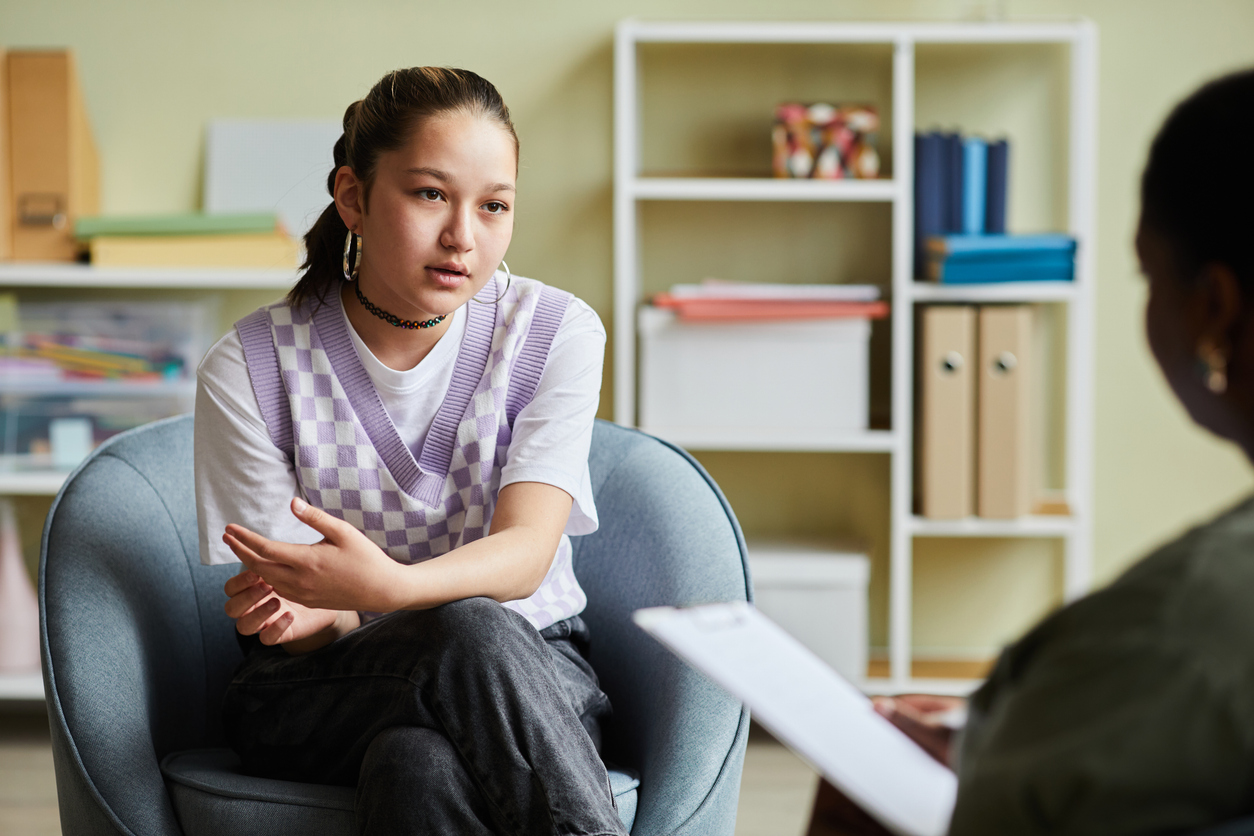Signs of PTSD and Addiction Dual Diagnosis
Teens with a dual diagnosis of PTSD and addiction often exhibit a complex array of symptoms that can be difficult to distinguish from typical adolescent behavior. However, key signs can indicate the presence of these co-occurring disorders. These include:
- Behavioral Changes: Teens may exhibit drastic behavioral alterations, such as increased secrecy, withdrawal from social activities, or sudden changes in their friend group.
- Mood Swings: Look for significant and unexplained fluctuations in mood, ranging from intense irritability to profound sadness.
- Avoidance: Teens might actively avoid places, people, or situations that remind them of their trauma, which is a hallmark of PTSD.
- Substance Use as Coping: There may be an increased reliance on drugs or alcohol as a means of coping with emotional pain or traumatic memories.
- Difficulty with Daily Routines: Challenges in maintaining school performance, difficulties in interpersonal relationships, and neglect of personal hygiene can be indicative of these co-occurring disorders.
Early detection of these signs is critical for effective treatment, as it can prevent the further progression of these disorders and lead to better long-term outcomes.
Causes of PTSD and Addiction Co-Occurring Disorders
The co-occurrence of PTSD and addiction in teens typically originates from traumatic experiences, which can profoundly impact their mental health and coping mechanisms. Understanding these root causes is critical for developing effective treatment strategies. The primary causes include:
- Exposure to Abuse: This includes physical, emotional, or sexual abuse, which can leave lasting psychological scars and lead to PTSD.
- Traumatic Accidents: Experiencing or witnessing severe accidents can trigger PTSD, leading teens to turn to substance use to manage their trauma.
- Witnessing Violence: Exposure to violent events, whether in the home, community or through media, can induce PTSD symptoms.
- Coping Mechanism: Teens often use substances as a way to self-medicate, trying to alleviate the distressing symptoms of PTSD but inadvertently developing an addiction.
- Environmental Influences: Factors such as family history of addiction, peer pressure, and lack of a supportive environment can compound the risk of developing co-occurring disorders following a traumatic event.
Recognizing these causative factors is crucial in addressing both PTSD and addiction in teens, allowing for a more tailored and effective approach to treatment.
Treatment for PTSD and Addiction Dual Diagnosis
Effective treatment for teens with a dual diagnosis of PTSD and addiction requires a comprehensive approach that addresses both conditions in tandem.
At Visions Adolescent Treatment Centers, we tailor our therapies to suit the individual needs of each teen, offering a combination of personal, group, and family therapy sessions complemented by psychiatric care. Our treatment methodology blends evidence-based practices, such as Cognitive Behavioral Therapy, specifically designed to address PTSD and addiction issues, with holistic treatments like art therapy to support a thorough recovery process.
Our focus is on each adolescent’s distinct needs and challenges, creating a supportive and healing environment that fosters growth and long-term wellness.
Initial Evaluation & Treatment Plan
The treatment journey for teens with PTSD and addiction begins with an in-depth evaluation. This process involves understanding the teen’s unique experiences with trauma and substance abuse, their mental health history, and any underlying factors contributing to their conditions. The evaluation includes clinical assessments, interviews with the teen and their family, and possibly psychological testing. Based on this comprehensive assessment, a personalized treatment plan is formulated, aiming to address both PTSD and addiction concurrently. The plan typically outlines specific therapies and medication management and sets measurable goals tailored to the teen’s needs, ensuring a focused and practical approach to treatment.
Supplementary Education
Educational support plays a crucial role in the treatment of teens with PTSD and addiction. This aspect of treatment involves teaching teens about the nature and effects of their conditions on both the brain and behavior. It includes detailed information on how trauma impacts mental health and how addiction develops as a coping mechanism. Teens are educated about healthy coping strategies, the importance of self-care, and the recovery process. Additionally, education on relapse prevention is provided, equipping them with the knowledge and tools to identify and manage potential triggers in the future. This educational component empowers teens, helping them understand their conditions and actively participate in their recovery journey.
Therapy
Therapy is the cornerstone of treatment for teens with PTSD and addiction. A combination of cognitive-behavioral therapy (CBT) and trauma-informed therapy is often employed. CBT helps in modifying negative thought patterns and behaviors associated with both PTSD and addiction. Trauma-informed therapy addresses the specific trauma at the heart of PTSD, helping teens process and healthily manage their traumatic experiences. Family therapy is another vital component, as it improves communication, resolves conflicts, and strengthens family dynamics, creating a supportive home environment. These therapeutic approaches are tailored to the teen’s needs, ensuring they receive the most effective treatment for their situation.
Nutritional Support
Nutrition is a fundamental aspect of the recovery process for teens with PTSD and addiction. A well-balanced diet is crucial in restoring physical health, which is often compromised due to substance abuse and stress associated with PTSD. Nutritional support involves providing a diet rich in essential nutrients, vitamins, and minerals that aid in the repair and rejuvenation of the body. Registered dietitians may assess the teen’s nutritional needs and devise a diet plan that enhances their overall well-being. In some cases, specific nutritional supplements might be recommended to address deficiencies or support brain health, further enhancing the effectiveness of the overall treatment program.
Holistic Approaches
Holistic treatments are an integral part of the treatment strategy for teens dealing with PTSD and addiction. Approaches like yoga and meditation offer therapeutic benefits by reducing stress, enhancing mindfulness, and improving emotional regulation. These practices can be particularly effective in helping teens develop coping skills to manage PTSD symptoms and cravings related to addiction. Art therapy is another key holistic approach, offering a creative outlet for self-expression and emotional exploration. Engaging in these activities provides a constructive way to process emotions and trauma, complementing the more traditional therapies and contributing to a well-rounded, holistic recovery experience.
Medication Management
Medication can play a crucial role in the treatment of teens with PTSD and addiction. For PTSD, medications such as antidepressants can help manage symptoms like anxiety, depression, and sleep disturbances. In addiction treatment, medications may be used to alleviate withdrawal symptoms, reduce cravings, or treat co-occurring mental health disorders. Effective medication management is key, involving careful selection, dosing, and monitoring of medication use to ensure safety and efficacy. This process is overseen by healthcare professionals, who work closely with the teen to monitor their response to the medication and make adjustments as needed. The goal is to use medication as a supportive tool in a broader, comprehensive treatment plan.
Support
Ongoing support is a cornerstone in the recovery journey for teens battling PTSD and addiction. This support network, encompassing therapists, peers, and family members, plays a vital role in the teen’s path to recovery. Therapists offer continuous guidance and professional insights, helping teens navigate the challenges of their dual diagnosis. Peer support, often in group therapy or support groups, provides a sense of community and understanding from others facing similar struggles. Family support is equally crucial, as a nurturing and understanding home environment significantly contributes to the teen’s resilience and ability to cope. This multi-faceted support system offers a blend of empathy, encouragement, and accountability, essential for long-term recovery and success.
Aftercare Planning
Aftercare planning is a critical component of the treatment process for teens with PTSD and addiction. After completing the initial treatment program, it focuses on ensuring sustained recovery and well-being. An effective aftercare plan typically includes strategies for relapse prevention, such as identifying triggers and developing coping mechanisms to deal with potential challenges. It also encompasses ongoing support resources, like continued therapy sessions, support group meetings, and check-ins with counselors or mentors. The aim is to provide the teen with a structured, supportive framework that they can rely on as they transition back into daily life, helping to maintain the progress made during treatment and prevent relapse.
Levels of Treatment
The treatment for teens with PTSD and addiction varies depending on the severity and specific needs of the individual.
Different treatment levels are available, each tailored to provide the appropriate intensity of care. Residential treatment offers a highly structured and immersive environment, ideal for those needing intensive support and supervision. Extended care follows initial treatment, providing ongoing support as teens reintegrate into their daily lives. Intensive Outpatient Programs (IOPs) offer a more flexible approach, allowing teens to maintain their educational or other commitments while receiving consistent therapy and support.
Each level of treatment is designed to meet teens where they are in their recovery journey, providing the right balance of structure, support, and independence.
Residential Treatment
Residential treatment is a comprehensive level of care for teens with PTSD and addiction, offering a structured and therapeutic environment. This setting is particularly beneficial for individuals requiring close supervision and intensive treatment. It typically includes a combination of individual therapy, group sessions, and family counseling, along with educational and holistic activities. The immersive nature of residential treatment allows for a focus on healing and recovery away from everyday stressors and triggers, providing a safe space for teens to address their trauma and substance abuse issues profoundly and effectively.
Extended Care
Extended care is a critical phase of treatment that bridges the gap between intensive therapy and returning to everyday life. It provides continued support and guidance for teens after their initial treatment program. This level of care helps them apply the skills and strategies learned in therapy to real-world situations, easing the transition back into their home, school, and community environments. Extended care often includes ongoing therapy sessions, support group meetings, and regular check-ins, ensuring that teens maintain their recovery progress and have access to help should challenges arise.
Intensive Outpatient Program (IOP)
Intensive Outpatient Programs (IOPs) offer a flexible yet effective treatment option for teens with PTSD and addiction. IOPs are designed to accommodate the teen’s educational and other personal commitments while providing regular, structured therapy. These programs typically include several hours of weekly therapy, including individual counseling, group therapy, and sometimes family sessions. IOPs focus on continuing the progress made in previous treatment phases, emphasizing relapse prevention, coping strategies, and applying skills in everyday settings. This approach allows teens to stay connected with their support system and maintain their recovery momentum while engaging in their daily lives.






